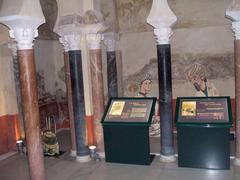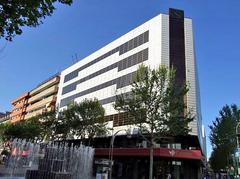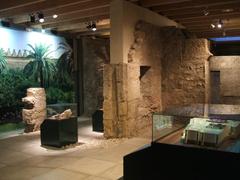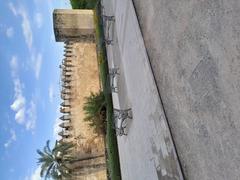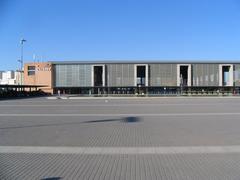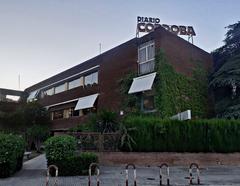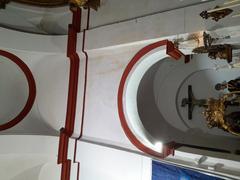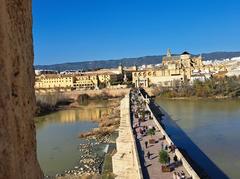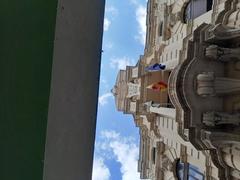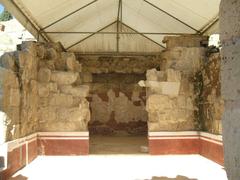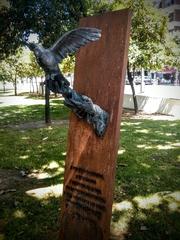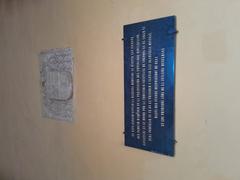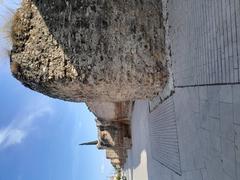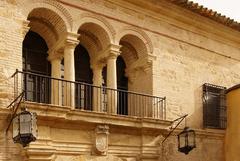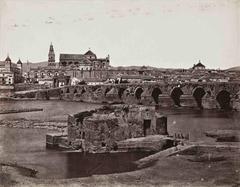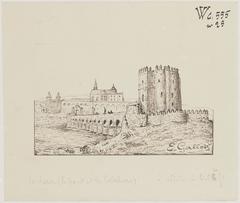Fuente de Santa María: Visiting Hours, Tickets, and Attractions in Córdoba
Date: 03/07/2025
Introduction
The Fuente de Santa María, set within the emblematic Patio de los Naranjos of the Mosque-Cathedral of Córdoba, is a testament to the city’s layered history and multicultural heritage. This guide provides a detailed overview of its historical background, architectural features, cultural significance, conservation efforts, legends, and practical visitor information—including visiting hours, ticketing, accessibility, and nearby attractions. Whether you are an art enthusiast, history lover, or cultural explorer, understanding the Fuente de Santa María’s significance will enrich your journey through Córdoba’s historic heart.
Historical Background and Significance
Origins and Evolution
The fountain’s origins trace back to the medieval period when the Patio de los Naranjos served as an ablution courtyard for the mosque’s worshippers. With the Christian reconquest in 1236, the mosque transitioned into a cathedral, and the courtyard’s role gradually evolved from religious ritual to civic and ornamental use. The fountain itself was reconstructed in the Baroque style during the 17th and 18th centuries, reflecting changing artistic and urban values (Mosque-Cathedral of Córdoba, Commons: Fuente de Santa María, Mosque-Cathedral of Córdoba).
Architectural Features
Constructed from local limestone, the fountain showcases a multi-tiered basin with water cascading from central sculpted elements. The upper tiers often feature religious iconography, such as the Virgin Mary or heraldic emblems. Moorish geometric precision is harmoniously combined with Baroque exuberance, echoing Córdoba’s Islamic and Christian artistic traditions. The fountain’s placement among the orange trees and arcades of the courtyard creates a serene and contemplative setting (Patio de los Naranjos).
Cultural and Religious Role
Historically, the fountain’s water was integral to ritual ablutions. Over time, it became a focal point for processions during significant religious festivals, serving as a symbol of communal life and spiritual renewal. Its enduring presence in local folklore, especially the story of the “caño del Olivo” spout, reflects the fountain’s integration into Córdoba’s intangible heritage (La Sexta Viajestic).
Conservation and Intangible Heritage
Preservation Efforts
As part of the UNESCO World Heritage-designated Mosque-Cathedral complex, the Fuente de Santa María undergoes regular conservation, including structural assessments, stone restoration, and water quality management. These actions are coordinated by local and international heritage organizations to ensure the longevity and authenticity of the fountain (UNESCO: Historic Centre of Cordoba, Conoce Tus Fuentes).
Ongoing Challenges
- Tourism Pressure: Over 2 million annual visitors increase risk of wear.
- Environmental Factors: Extreme summer heat and urban changes challenge water purity and stone preservation.
- Public Access: Balancing visitor experience with protection measures is a continual priority.
Legends and Local Lore
The “caño del Olivo” spout is rooted in legend: unmarried women who drink from it are said to soon find a spouse. This tradition, passed down through generations, infuses the fountain with romantic appeal and keeps its intangible heritage alive (La Sexta Viajestic, Soy Cordobés/a).
Cultural Activities
The fountain is a highlight during Córdoba’s Fiesta de los Patios, and its legends are regularly shared in guided tours, educational programs, and community events (The Gap Decaders).
Practical Visitor Information
Visiting Hours and Ticketing
- Standard Hours: 10:00–19:00 (may vary seasonally and during religious events; consult the official website)
- Early Access: 8:30–9:30 may allow free entry to the courtyard and fountain (interior of the Mosque-Cathedral not included)
- Tickets: Included with Mosque-Cathedral entry (approx. €13/adult as of 2025). Some special events may allow separate courtyard access.
Getting There
- Address: Fuente de Santa María, Mezquita-Catedral, Córdoba, 14003, Spain (Google Maps location)
- On Foot: Central and easily reachable from major historic sites
- Public Transport: City bus lines 3, 4, 7, and 12 stop nearby
- Parking: Limited; walking is recommended within the historic center
Accessibility
- Mobility: The courtyard is mostly flat and accessible, with ramps at main entrances; cobblestones may present minor challenges
- Facilities: Restrooms and shaded seating available; drinking water not provided from the fountain (it’s a protected monument)
Travel Tips
- Best Times: Early morning or late afternoon for fewer crowds and optimal lighting
- Seasonal Highlights: Spring and local festivals add vibrancy to the experience
- Etiquette: Respect the fountain’s historic status—no climbing, drinking from spouts, or disruptive behavior
Nearby Attractions and Suggested Itineraries
- Mezquita-Catedral de Córdoba: Explore the iconic mosque-cathedral architecture
- Alcázar de los Reyes Cristianos: Visit the fortress-palace and gardens
- Roman Bridge and Jewish Quarter: Discover more of Córdoba’s rich heritage
- Local Tapas Bars: Enjoy Andalusian cuisine nearby
Suggested Itinerary: Combine a visit to the fountain and Mosque-Cathedral with a walk across the Roman Bridge, a tour of the Alcázar, and a stroll through the Jewish Quarter.
Frequently Asked Questions (FAQ)
Q: What are the Fuente de Santa María visiting hours?
A: Generally 10:00 to 19:00, but hours may vary. Check the official website for current schedules.
Q: Is a ticket required to visit?
A: Entry is included with your Mosque-Cathedral ticket (approx. €13/adult). Occasionally, the courtyard is accessible separately during special events.
Q: Is the fountain accessible for wheelchairs?
A: The area is largely accessible with ramps, though some uneven surfaces exist.
Q: Can I drink from the fountain?
A: No, it is a protected monument. There are many public drinking fountains in Córdoba.
Q: Are guided tours available?
A: Yes, many tours include the fountain and its stories; audio guides are also available.
Q: What is the best time to visit?
A: Early morning or late afternoon to avoid crowds and enjoy softer light for photos.
Visual Recommendations
- High-resolution images of the fountain’s stonework, basins, and setting among orange trees
- Photos of the fountain during festivals or quiet moments
- Maps and virtual tours of the Mosque-Cathedral complex and Patio de los Naranjos
Sustainability and Responsible Tourism
- Support conservation by following site rules and participating in guided tours
- Respect the monument and surrounding environment
- Contribute to local heritage by purchasing crafts and dining locally
Internal Links
Sources and Further Information
- Mosque-Cathedral of Córdoba
- Tourist Places Guide
- Official Córdoba Tourism Website
- Conoce Tus Fuentes
- La Sexta Viajestic - Legend of the Fuente de Santa María
- Official Mezquita-Catedral Website
- Public Fountains of Córdoba
- UNESCO: Historic Centre of Cordoba
- Soy Cordobés/a
- The Gap Decaders
Conclusion
The Fuente de Santa María is more than a historical monument; it is a living symbol of Córdoba’s artistic, religious, and social traditions. Through thoughtful preservation, communal storytelling, and responsible tourism, this Baroque fountain continues to inspire and connect generations. Plan your visit, respect its heritage, and immerse yourself in the stories and beauty of Córdoba’s historic heart.
Call to Action
For the latest updates on visiting hours, ticketing, and events, consult the official Córdoba tourism website and download the Audiala app for guided tours, maps, and tips. Share your experiences with #FuenteDeSantaMariaCórdoba and join a global community celebrating Córdoba’s living heritage.
